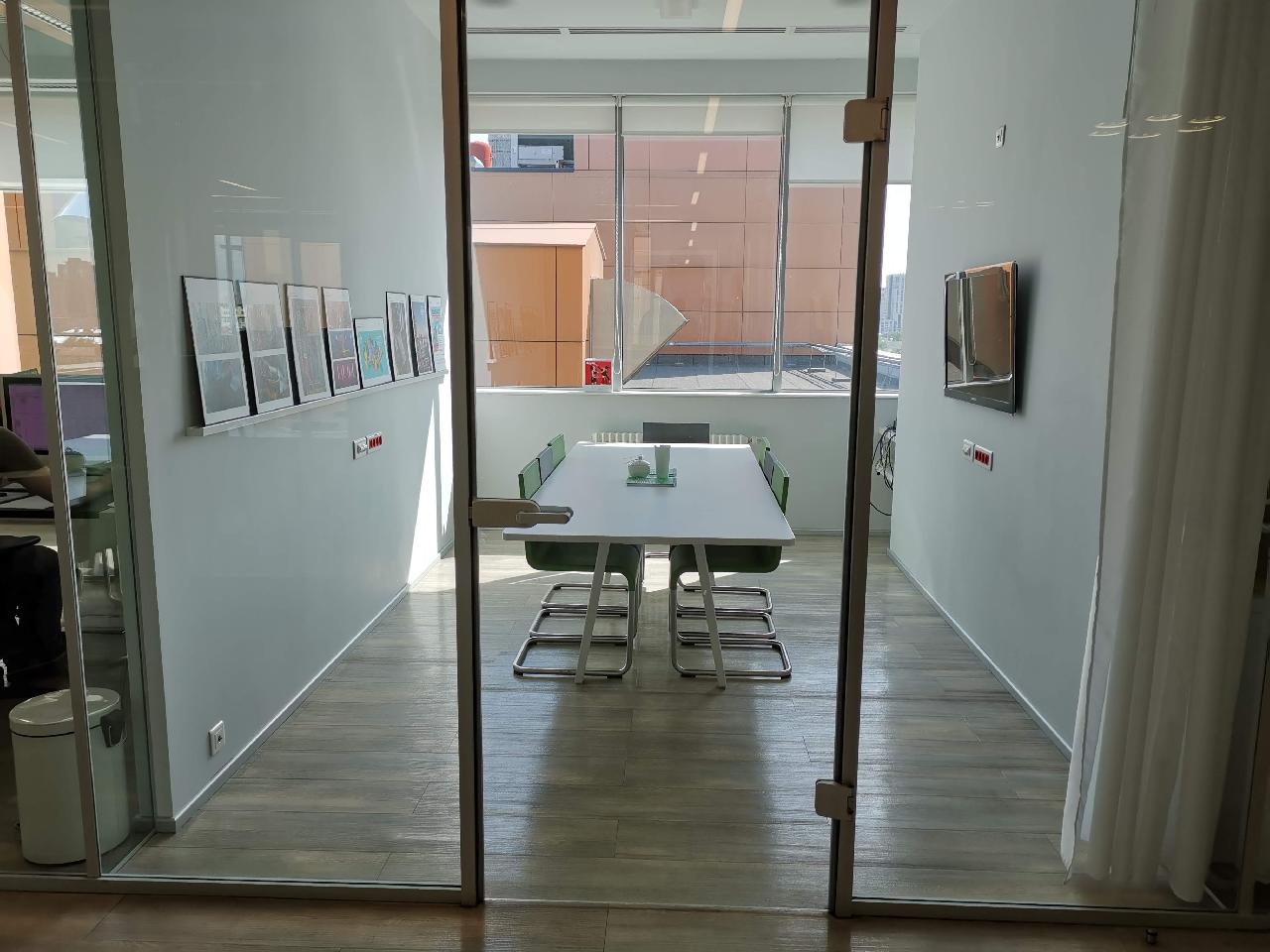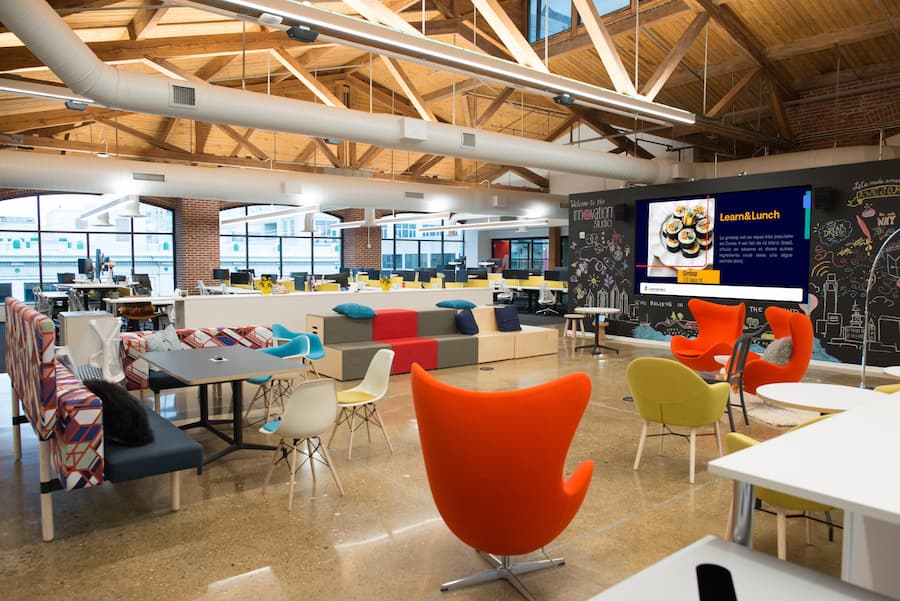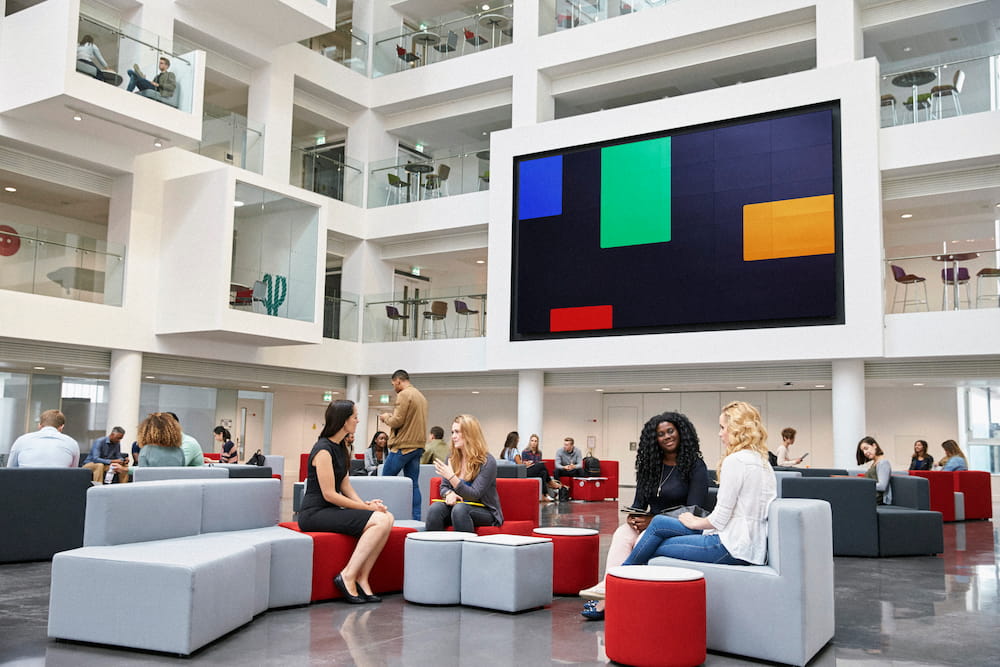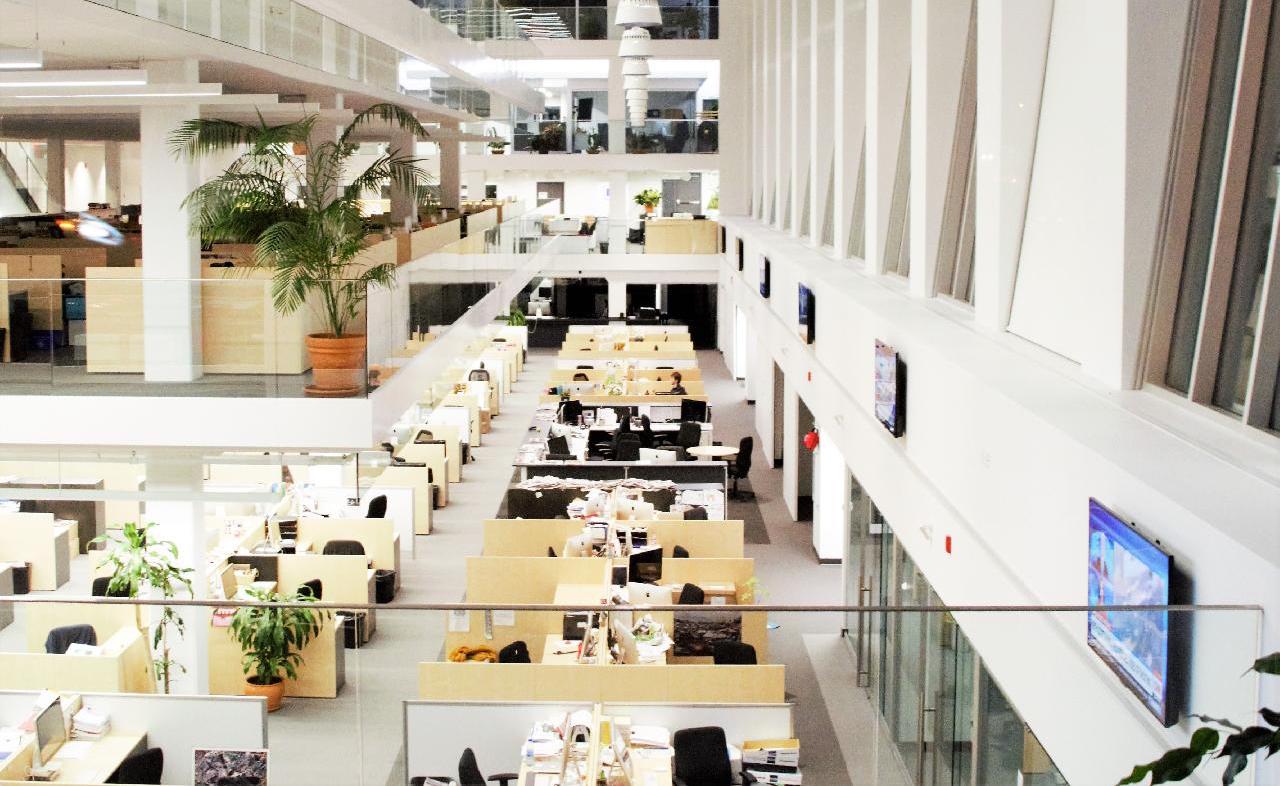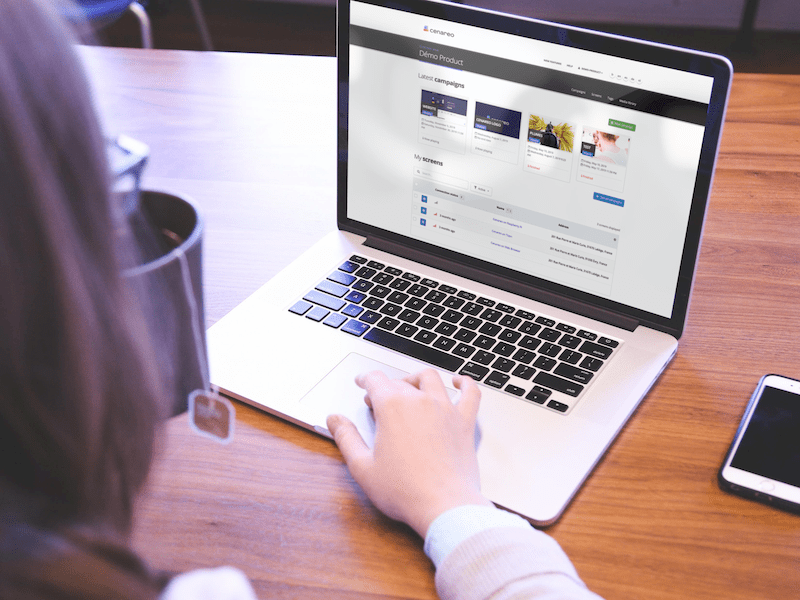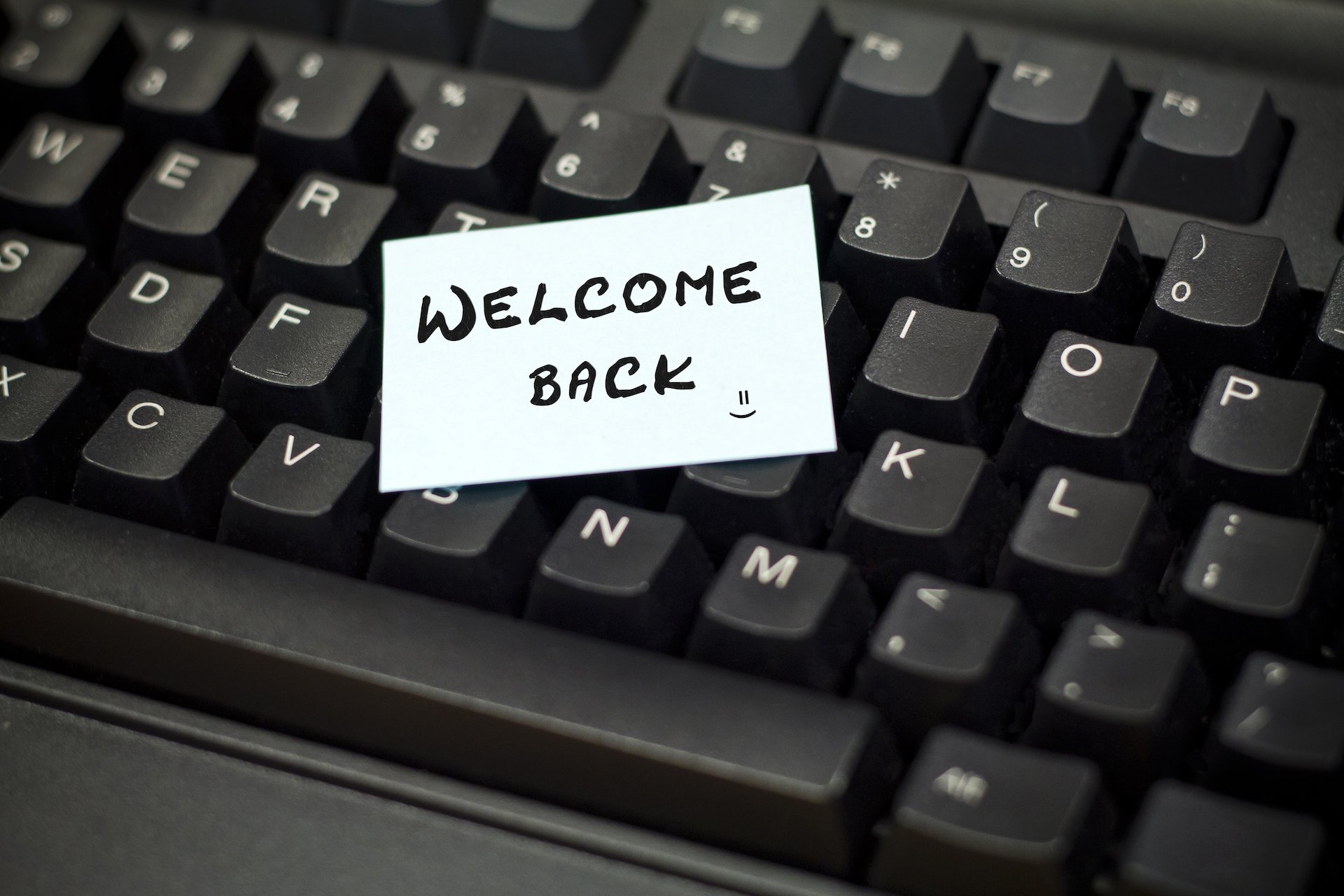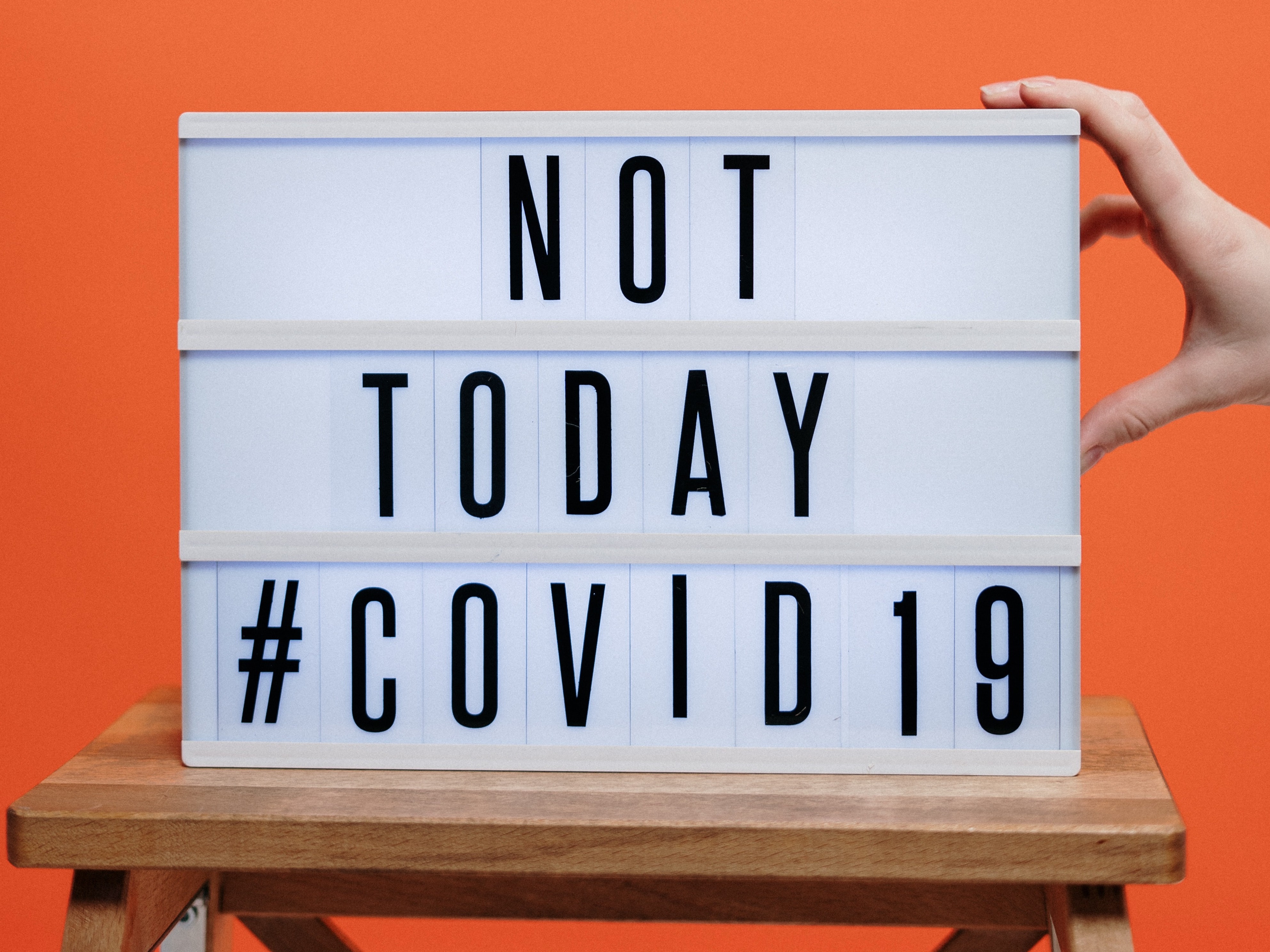Digital signage is a great medium for internal communications. A transparent way to share information with everyone at the same time, it’s more engaging and less intrusive than email, and much more dynamic. Here we look at some of the benefits of adding digital signage as a HR tool, and importantly, how you can check that you’re getting it right. The purpose of signage is always to enter into a conversation with your audience, so using viewer feedback is one of the best ways to measure the success of your campaigns.
👨💼👩💼 Employee engagement is a business priority
Engaged employees are good for business. Research shows that employees who share a positive company culture are not only happier and more committed, but achieve more too. A Gallup survey found that highly engaged teams had 41% less absenteeism and 17% more productivity than less engaged ones. They are also more likely to stay with their employers, saving money in recruitment and keeping knowledge within the business.
As a company, how do you make sure that employees are engaged and feel part of the team? Good internal communication is a vital part of creating a positive and rewarding work environment. In fact, in a Harvard Business Review study where executives were asked this question, communication appeared in three of the top four strategies. Specifically, giving people recognition for good performance, having senior management communicate the business’ strategy and making sure that business goals were communicated across the company. A good internal comms campaign can deliver on all of these actions.
📢 Benefits of digital signage in internal communications
Internal comms campaigns are about talking to a group of people.This is exactly what digital signage is designed for. Instead of interrupting someone’s workflow like an email often does (research by Atos Origin found the average employee spends 40% of their working week dealing with internal emails), signage is an ambient way of communicating. If screens are put in the right place then they give people information at just the right time - when they’re between tasks, when they are waiting or when they deliberately seek them out. Whereas email can be isolating, especially when you’re not sure who else was on copy, signage is a transparent way of communicating. Everyone is seeing the same thing at the same time. Signage is also just as well-suited to sharing the fun stuff - celebrating a birthday or welcoming a new employee - as it is to serious presentation of sales figures or slides on growth strategy. And being able to show video and images gives HR more scope to make creative and engaging content.
🗣️ ‘Harmonised information’ for employee communication
Being able to take all employees on the same journey, even when they are based in different countries, has been a major benefit of digital signage to Diana Pet Food. With Cenareo, the company created a new screen-based communication system for its 1,090 employees. Cécile Briendo, Communication Project Manager at Diana Pet Food explains :
“In total, we have 34 screens across the 14 countries, circulating group information. The messages have been adapted into eight different languages so that all workers, from Brazil to Canada and from China Australia, can have access to harmonised information.”

The screens broadcast news about the business and projects under way, they share best practice, and announce new employees. They also give local information, like announcing when a catering truck will be in the plant’s car park, for example. 90% of employees are happy with the system.
📈 Setting and measuring communications objectives
Using digital signage for internal communications lets you be more creative with digital content but also more structured. Scheduling tools in your digital signage content management system allows you to choose which screens should show your campaigns and at what times.
There’s another factor to think about too: where the screens are. Their locations will have an impact on what content is appropriate. Considering content, scheduling and location means that you can be more granular in your communications objectives. For example, if your objective is to celebrate employees' success more, you can decide if that’s across different departments - so showing content on screens in certain areas, and if that’s at certain times, for example, before important meetings, or before social events.
🎯 Setting clear objectives allows you to measure the performance of your campaigns and make improvements. One of the best ways to do this is to ask your audience for feedback.
How engaged are your employees with the screens - are they using them regularly? Do they notice when new content is added? Do they like using them as a reference point for metrics about company performance? Are they responding to the tone you are using?
⬇️ Below we suggest some questions to help you build a survey for your team. You can use the findings to fine tune your strategy, get the best return on investment for your campaign, and most importantly, keep your employees engaged.
❔ Reviewing your campaigns with an audience survey
- How often do you look at the digital signage screens at work?
- Which screen do you look at most often?
- Did you notice [specific campaign]?
- What can you remember about the message?
- What types of announcements do you want to see?
- Real-time company information
- Monthly / quarterly company information
- Company strategy / vision
- Corporate social responsibility / charity updates etc.
- How often do you see fresh content on the screen you look at most often?
- Several times a week
- Once a week
- Twice a month
- I don't know
- How long do you spend looking at the screen you look at most often?
It's important to take every results into account, to adapt your content strategy and then to do a survey again. Don't hesitate to evaluate your employees satisfaction and engagement several times a year, to be sure that your on-screen corporate communication is efficient in the long-term.
Thanks to Cenareo solution, you'll be able to create and schedule content easily that will connect and engage your employees. Our expert team will help you getting the most of your screens to communicate and interact with your teams.
